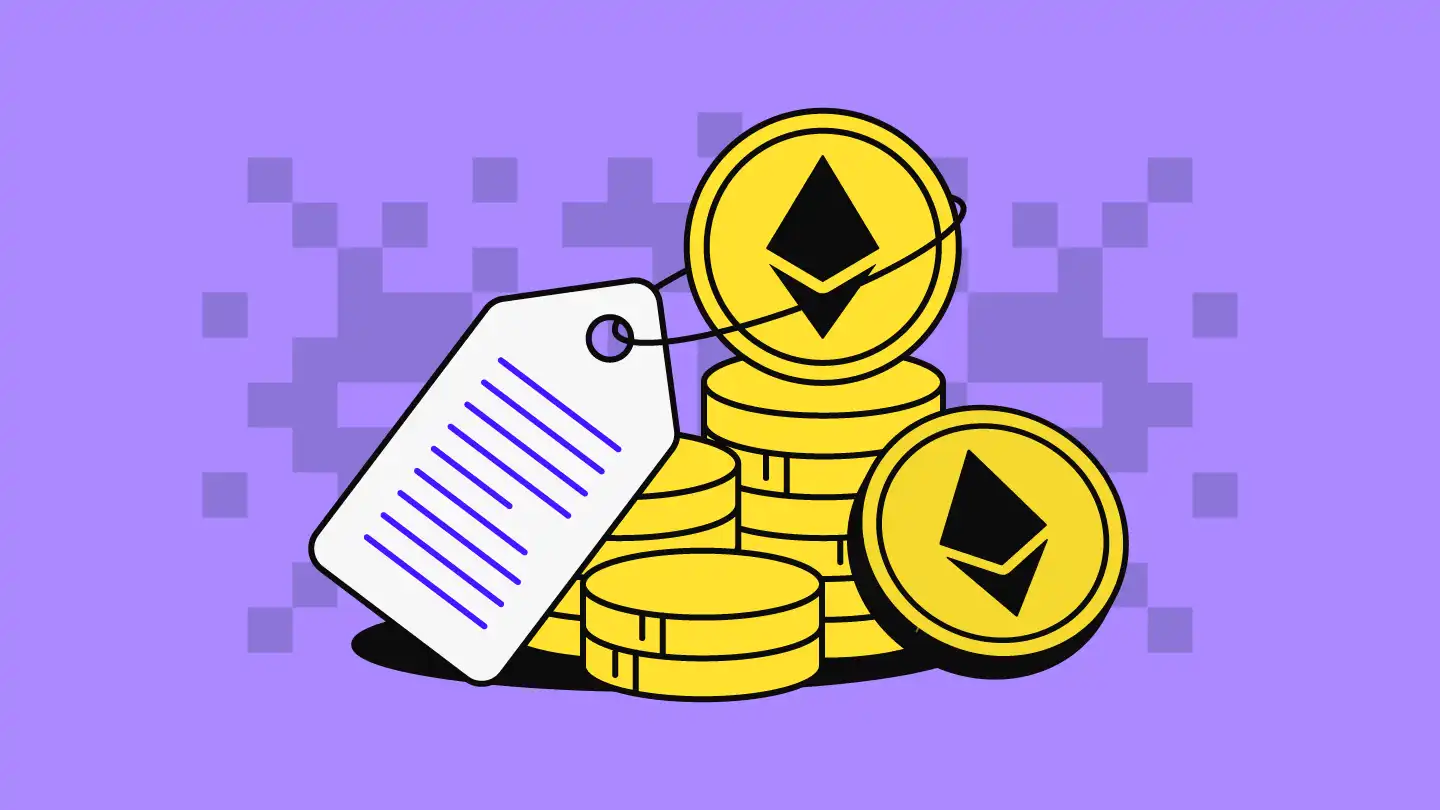Share Posts

Best Crypto Trading Strategies 2026
114
7352
103
Like any groundbreaking technology that goes hyped for a certain period, blockchain and cryptocurrencies are improving as days pass. In recent years, cryptocurrencies have gained tremendous popularity and growth in value. People have been especially excited about crypto since it began more than anything else. Crypto trading is a viable way to invest who want to grow their profits and be at the forefront of technological innovations.
Whether you're just starting with crypto trading or you're already an experienced trader wanting to refine your strategies, this blog has got you covered. Here, you'll find insights that will help you navigate the constantly shifting landscape of cryptocurrency and make informed decisions. Stay tuned for practical strategies to boost your crypto trading skills.
What are Crypto Trading Strategies?
Crypto trading strategies are a well-defined and systematic approach that traders use to decide when to buy, sell, or hold onto cryptocurrencies. It involves following a set of rules and techniques that help increase your profits, manage risk, and attain your trading goals in the ever-changing crypto market. By providing systematic trading tactics, they prevent traders from making decisions out on emotions and urges. You can base your strategies on a variety of factors, such as technical, fundamental, and market analysis.
But to hit the big time in the fast-paced world of crypto trading, having a solid crypto trading strategy is essential that can make all the difference between success and failure. In this blog, we will explore the 10 best profitable crypto trading strategies along with useful tips to trade cryptocurrencies profitably. By using these strategies, you can adapt to the dynamic changes in the cryptocurrency market and find opportunities to capitalize on.
Why Do You Need a Crypto Trading Strategy?
Trading in the crypto market can be a bit challenging due to its tendency for drastic price fluctuations. Beginners just starting with crypto trading no longer need constant financial advice from experienced traders since crypto trading strategies streamline a significant portion of the decision-making process. Clear-cut crypto trading strategies are essential to navigate the high volatility and avoid losses during sudden price drops.
Crypto trading strategies help beginners set up risk parameters, fix stop-loss orders, and secure their investments from significant losses. By trying out various strategies, they can have a good understanding of various aspects of trading and improve their skills. Without a proper strategy, they are more likely to fall for common errors such as overtrading and failing to cut losses. It helps them align their trading activities with their financial goals.
As more and more transactions are made online, there is a growing concern for security and privacy, making cryptocurrencies an attractive option. There is no doubt that crypto trading continue to grow in the years to come, making it important for traders to gain deep insights into trading strategies and how to effectively utilize them to succeed in what is likely to become the primary form of trading in the future.
10 Best Crypto Trading Strategies
Crypto trading offers a wide range of strategies for traders to explore. Each approach caters to different risk appetites, timeframes, and market conditions. In this guide, we will delve into 10 of the best crypto trading strategies and provide key takeaways for each one.
Whether you're a seasoned trader or just starting, these strategies can help you navigate the exciting world of cryptocurrency trading.
1. High-Frequency Trading
High-frequency Trading (HFT) is a sophisticated trading strategy that involves executing a vast number of trades in a very short period, typically within fractions of a second. It relies heavily on advanced algorithms and high-speed data feeds to capitalize on small price discrepancies in the financial markets.
Traders can take advantage of market movements faster than human traders can react, which can result in significant profits. They can handle a large number of assets and markets simultaneously. It often provides liquidity to the market by continuously quoting bid and ask prices.
Key Takeaways
1. Trades at lightning speed
2. Advanced algorithms and technologies
3. Contributes to market liquidity
2. Scalping
Scalping is a short-term trading strategy that aims to profit from small, rapid price movements in financial markets. It lets traders make numerous quick trades throughout the day, holding positions for very short periods, often seconds or minutes. It primarily relies on technical analysis, studying price charts, indicators, and patterns to identify short-term price fluctuations and potential entry and exit points.
It usually closes all positions by the end of the trading day, eliminating the risk associated with overnight price fluctuations. By targeting small price movements, scalpers aim to accumulate gains throughout the day. Frequent entering and exiting positions ensure smoother price movements for all market participants.
Key Takeaways
1. Profit from small price movements
2. Rapid decisions based on real-time market data
3. Minimizes emotional decision-making
3. Range Trading
Range trading capitalizes on price oscillations or fluctuations within a defined price range. Traders employing this strategy aim to profit by buying near the lower boundary and selling near the upper boundary of the established range. When the price approaches the lower support level, range traders may initiate a buy position, anticipating a price rebound within the range.
Range trading involves repeatedly buying low and selling high within the established range as long as it remains intact. It takes advantage of the predictability of price movements within a well-established range. Traders can filter out short-term market noise and focus on the core trend within the range, which can help in decision-making.
Key Takeaways
1. Predictable price movements
2. Reduced risk
3. Adaptability
4. Arbitrage Trading
Arbitrage trading exploits the same or similar asset price discrepancies in different markets or exchanges. Traders who employ arbitrage seek to profit from the price differences by simultaneously buying low in one market and selling high in another. It monitors multiple markets or exchanges for price differences in the same asset.
Once an arbitrage opportunity is identified, the trader quickly buys the asset in the market where it is cheaper and simultaneously sells it in the market where it is more expensive. Its opportunities are based on observable price differences, making the profit potential relatively predictable compared to other trading strategies.
Key Takeaways
1. Reduced market risk
2. Risk-free profit
3. Predictable gains
5. HODL
HODL represents a long-term investment strategy in which cryptocurrency holders resist the urge to sell their assets during periods of price volatility and instead keep them for an extended period, often years. HODLers buy cryptocurrencies to hold onto them for an extended period, regardless of short-term price fluctuations or market volatility.
It reduces the exposure to short-term market volatility and speculative trading. It avoids the pressure to make quick trading decisions and minimizes transaction costs associated with frequent buying and selling. It can be an attractive option for those who prefer a more hands-off approach to investing.
Key Takeaways
1. Straightforward strategy
2. Long-term Investment
3. Tax Advantages
6. Day Trading
Day trading is a short-term trading strategy where traders buy and sell financial assets within the same trading day. Day traders aim to profit from the price fluctuations that occur within a single session, capitalizing on both rising and falling market prices. These trades can be in various financial instruments, such as stocks, cryptocurrencies, forex, or commodities.
Day traders focus exclusively on intraday price movements and do not hold positions overnight, which helps avoid the risks associated with overnight market developments. It offers the potential for daily income, allowing traders to profit from intraday price swings. It requires constant monitoring and decision-making throughout the trading session.
Key Takeaways
1. Quick profits
2. Potential for daily income
3. Active involvement in trading
7. Swing Trading
Swing trading aims to capture shorter to medium-term price movements within financial markets. Swing traders can typically hold positions for several days or weeks, as opposed to day traders who operate within a single trading day. This strategy involves analyzing price swings and using technical and fundamental analysis to make trading decisions.
It strikes a balance between the short-term intensity of day trading and the long-term commitment of HODLing. Traders can participate in the markets without the need for constant monitoring. Compared to other trading strategies, swing trading allows for a more relaxed approach, as traders don't need to make rapid decisions or sit in front of screens all day.
Key Takeaways
1. Medium-term price swings
2. Opportunity to capture profits
3. Multiple trade option
8. Dollar-cost Averaging
Dollar-cost Averaging involves regularly investing a fixed amount of money at predefined intervals, regardless of the asset's price. This approach is designed to reduce the impact of market volatility and allows investors to buy more shares or units when prices are low and fewer when prices are high.
Traders must invest a fixed dollar amount at regular intervals, such as weekly, monthly, or quarterly. Since DCA involves investing at regular intervals, investors buy more shares or units when prices are low and fewer when prices are high, effectively spreading their purchases over time. It is suitable for both beginners and seasoned traders.
Key Takeaways
1. Consistent growth
2. Beginner-friendly
3. Regular investments
Read more: DCA Trading Strategy
9. Long-Term Position Trading
Long-term position trading is an investment strategy where traders and investors buy and hold assets for an extended period, typically spanning several months to several years. The goal of long-term position trading is to benefit from the potential growth of the asset over an extended timeframe, rather than attempting to profit from short-term price fluctuations.
Once assets are chosen, traders and investors buy them to hold them for an extended period, regardless of short-term market volatility or price fluctuations. Long-term position traders have a future-oriented approach, aiming to build wealth over time. Holding assets for an extended period can also result in favorable tax treatment in some jurisdictions.
Key Takeaways
1. Reduced short-term volatility
2. Potential for compounding returns
3. Tax Benefits
10. News-based Trading
News-based trading relies on timely and significant news events to make trading decisions. Traders who employ this strategy seek to profit from the price volatility and rapid market reactions that often follow important news releases. Some traders may use limit orders or stop orders to automate their trades once certain price levels are reached.
Traders analyze the potential impact of the news event on various financial instruments, such as stocks, currencies, commodities, or cryptocurrencies. They consider the consensus market expectations and the potential deviation from those expectations. Traders who stay well-informed about current events and economic developments may have an information edge that can be leveraged for trading decisions.
Key Takeaways
1. Immediate execution
2. Information Advantage
3. Market Catalyst
How to Manage Risk in Crypto Trading?
If you're considering cryptocurrency trading, it's important to know that there are profit opportunities, but also risks due to its unpredictable nature. To ensure you're keeping your investment safe and increasing your chances of success, you'll want to use some effective risk management strategies. Below are five techniques that have been shown to work well for managing risk in crypto trading.
Set Stop-Loss Order
A stop-loss order is a predetermined price level at which you automatically sell your cryptocurrency to limit potential losses. Stop-loss orders help you define the maximum loss you are willing to accept on a trade. They prevent emotional decision-making during price downturns.
Hedge Your Positions
Hedging involves opening positions that counteract potential losses in your existing holdings. If you hold a substantial amount of a particular cryptocurrency and are concerned about a price drop, you can use derivatives or options to hedge against that potential decline. Effective hedging can offset losses in one position with gains in another. It safeguards your overall portfolio from adverse price movements.
Consider Risk-Management Tools
Some cryptocurrency exchanges offer risk-management tools such as trailing stop orders and take-profit orders. These tools automate risk management, ensuring you don't miss profit-taking opportunities or let losses accumulate. You can tailor these tools to your trading strategy and risk tolerance.
Perform Technical and Fundamental Analysis
Another best way to trade cryptocurrencies is to perform technical and fundamental analysis It helps you identify trends and entry/exit points, while fundamental analysis evaluates factors like technology, teams, partnerships, and market demand. Understanding market trends and the fundamentals of a cryptocurrency can reduce the risk of unexpected losses.
Diversify Your Portfolio
Diversification involves spreading your investments across different cryptocurrencies rather than concentrating all your capital in one. By holding a mix of assets, you reduce the impact of poor performance in one asset on your overall portfolio. It allows you to participate in multiple cryptocurrency markets, increasing your chances of profiting from rising prices.
10 Common Mistakes to Avoid in Crypto Trading
If you want to increase your chances of success in the cryptocurrency market, it's important to avoid making common mistakes in your trading practices. By doing so, you'll be on the right track to achieving your goals. Let’s take a look at some of the common mistakes to be avoided in crypto trading.
1. Trading without understanding the assets or market can lead to poor decisions.
2. Neglecting stop-loss orders, proper position sizing and portfolio diversification can result in significant losses.
3. Allowing emotions like fear and greed to drive decisions can lead to impulsive actions and losses.
4. Excessive trading can increase transaction costs and expose you to unnecessary risks.
5. Trying to recover losses by making high-risk trades can deepen your losses.
6. Buying assets impulsively can lead to buying at inflated prices.
7. Storing assets on insecure platforms or failing to protect your private keys can result in theft or loss.
8. Failing to analyze price charts and indicators can lead to missed opportunities.
9. Trading without a clear strategy and plan.
10. Following the crowd can lead to unnecessary losses.
Related Article: Best Crypto Trading Apps
Which is the Best Way to Trade Cryptocurrency?
If you're considering trading cryptocurrency, keep in mind that the market can be volatile. However, with careful consideration and strategy, it can be a rewarding venture. Here are some tips to help you trade cryptocurrency effectively.
How Much Crypto Should You Own?
Avoid putting all of your money into one cryptocurrency. Diversify your holdings across various assets to spread risk. Different cryptocurrencies may have different risk profiles and growth potential, so owning a mix can help balance your portfolio. If you're new to cryptocurrency trading, start with a small allocation of your overall investment portfolio.
The Right Mix of Storage
Consider using a mix of hot wallets and cold wallets to balance accessibility and security. Hot wallets are ideal for frequent trading due to their ease of use and quick access to funds while cold wallets are meant for long-term storage with improved security.
Learn more about crypto wallet -->
Prioritize Liquidity
Liquid assets are easily tradable with high trading volumes. Consider focusing on cryptocurrencies that have high liquidity to ensure you can enter and exit positions quickly. Use market orders to execute a trade quickly, as they buy or sell at the current market price. For more control over your trade, use limit orders to specify the price at which you want to buy or sell.
Harness Volatility
Cryptocurrency markets are known for their price volatility. While this presents risks, it also offers profit opportunities. Develop strategies that capitalize on price swings, such as day trading or swing trading, but do so with caution. Implement risk management techniques like stop-loss orders and position sizing to protect your capital.
Invest What You Can Afford
Never invest money you can't afford to lose. Crypto trading involves risk, and there are no guaranteed returns. Use only disposable income that won't affect your financial stability or essential expenses.
Tips for Profitable Crypto Trading
To make the most out of crypto trading, it's important to have a good understanding of how things work and to approach it with a smart strategy. It's also important to keep learning, take care of your risks, and stay calm even when the market gets a bit wild. Here are five essential tips for profitable crypto trading.
1. Explore and analyze before trading and dive into comprehensive research.
2. Define clear objectives, set targets, and stick to your plan.
3. Implement effective risk management to protect your investments prudently.
4. Stay informed on market shifts and trends in the crypto market.
5. Craft a clear-cut trading plan and well-defined strategies.
Conclusion
We hope this comprehensive guide has helped you understand the importance of the best crypto trading strategies, ways to use them, and manage risks in trading. However, it is also important to conduct thorough research, understand its risk tolerance, and choose a suitable trading strategy before entering the market. It is advisable to seek the opinion of crypto experts and advisors from a renowned blockchain development company like Maticz when it comes to handling the intricacies of crypto trading.
If you're seeking reliable financial advice and assistance for your crypto trading journey, look no further than Maticz. As a leading crypto exchange software solution provider, we are here to help you achieve your trading goals and navigate the exciting and potentially rewarding realm of cryptocurrency trading. Whether you're interested in day trading, long-term investing, or any other trading strategy, Maticz can provide you with the tools and knowledge you need to make sound financial decisions. Reach out to us today.
Related Article: Crypto Bot Trading Strategies, AI Crypto Trading Bot
Tap Into the Future
The latest insights, posts, and project updates - straight to your inbox.




